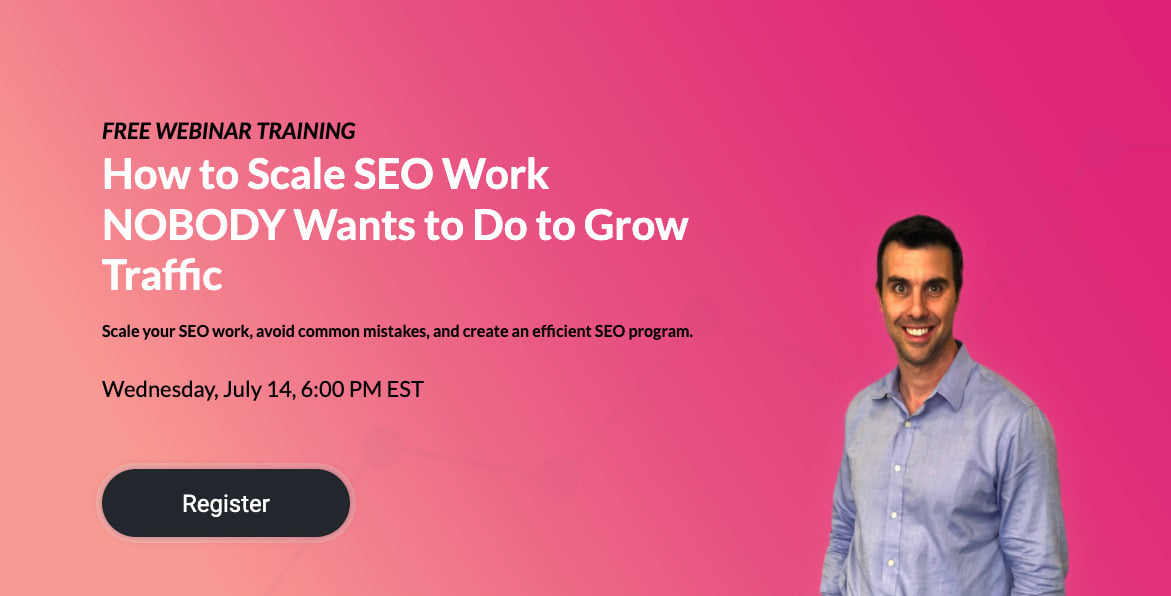Google I/O is the company’s annual developer conference held in Mountain View each year. The I/O stands for input/output, but is also a nod to the idea of “Innovation in the Open,” part of Google’s executive vision. This year marked the 12th I/O conference, and by now journalists, industry professionals, and tech fans hang on bated breath to see what updates Google has in store for the year. There is a lot to sort through for everyone, but what is relevant for search professionals?
If you missed this year’s I/O, we have you covered, here are seven takeaways that you need to know from the Google I/O 2019.
Search Console has a New Speed Report
One of the most talked about SEO features discussed during the Google I/O 2019 conference is a new website speed report for the Google Search Console. Speed is the top factor that customers take into consideration on any given website. Three-quarters of users say speed has a significant impact on the user experience. Site speed beats out navigation (66%), screen fit (61%), and ease of use (58%) for customer demand. With that, it only makes sense that Google would adjust its Search Console to highlight the importance of a speedy website.
With the new speed measurement tool, webmasters will see the customer search experience sorted into three buckets: slow, average, and fast. The name of the game is simple. You want the vast majority of your experiences to be fast. This tool will allow you to click into your slow and average buckets to see what went wrong and what is slowing users down on specific pages. As you start to fix errors on these pages, you can watch your site speed improve and the number of poor experiences decreases.
Google currently has a form open here if you are interested in becoming a tester for this new tool.
PWAs Are Coming to Desktop
Progressive Web Apps (PWAs) were developed as an alternative to mobile websites or smartphone apps. They are meant for people who want to have an app-like experience on their phones without having to download something.
PWAs benefit brands because users enjoy the mobile experience more and there is less pressure to convert users with a download. The popularity of PWAs is such that all major browsers will now support PWA installation.
Brands like Twitter and Spotify have seen significant growth because of PWAs, and this move to the desktop will help brands create a more unified experience across all devices. Instead of creating different desktop, mobile app, and PWA interfaces, brands will be able to use PWAs for the vast majority of engagements.
Google Lens Can Now Recognize Menu Items
Lens is a visual search tool that can recognize animals, text, celebrities, and shopping items. During this year’s Google I/O 2019 keynote, the company announced that Lens will now be able to “read” menus and pull up information on them. This makes it easy to read reviews and learn about specific foods.
For example, you can highlight a cheeseburger at your favorite diner to look at photos and read the reviews about people who enjoyed it. Alternatively, you can lower-rated menu items when you’re in an unfamiliar place.
This feature will drive restaurant owners to push customers to leave more reviews – and more specific reviews of what they ate. It’s not enough for a restaurant review to cover the cleanliness and service, people want to know specifically what is good to eat. This feature could also change search in helping specific items show up in search results. Even if you don’t run a dedicated burger joint, your restaurant name could rank highly for “best burgers in [city]” if your customers order the burger on your menu and rate it highly.
Customers Are Getting Greater Cookie Control
As part of the EU’s GDPR (General Data Protection Regulation) law, websites are required to disclose what information they collect from customers, how they plan to use it, and if the information is saved. This is why so many websites from across the web are suddenly asking if you will accept their cookies. While Google acknowledges that this step toward consent is in the right direction, the vast majority of people still have no idea what cookies are and what it means to reject or accept them.
Cookies help track everything from email logins to ad preferences, so users really have no idea what is good for them. Per an announcement on the Chromium blog:
“To browsers, all of these different types of cookies look the same, which makes it difficult to tell how each cookie is being used — limiting the usefulness of cookie controls.”
Many people simply clear all of their cookies on a regular basis, which creates a clunky web experience when users try to do something simple like check their email. Google is working to improve cookie controls so users can clear certain types of cookies while keeping others.
This update will likely have the biggest impact on the paid advertising front, especially if people become motivated to clear their browsing cookies more often. However, until the features are public and exceptionally easy to access and understand, most people will continue to use cookies in the same way they always have.
Google is also prohibiting the practice of fingerprinting, an underground tracking option that is nearly impossible to block.
Live Caption is Coming to Android Q
Google I/O 2019 introduced fans to the third beta incarnation of Android Q. While this announcement alone isn’t really enough to get SEO professional excited, the latest beta does come with an interesting new feature that makes Android devices more accessible while also boosting audience engagement: Live Caption.
Live Caption provides real-time continuous speech transcription for your phone. This includes phone calls and video calls, but also online videos, podcasts, and other recordings. Google intended this to help people who are deaf or hard of hearing, but the update also reflects our current state of smartphone use.
More than 85 percent of Facebook video is watched without sound. This is a statistic that has been echoed by other popular content creators like Mic and PopSugar. When companies add subtitles to their video content, the number of views and the length of the average view goes up. Oftentimes, viewers keep the sound off because they aren’t sure they actually want to watch the video yet or because they can’t turn the sound on in a public place (like employees watching videos at their desk or commuters watching on the train).
While Live Caption will definitely cut down on miscommunications and provide a service for the hard of hearing, it can also have a significant impact on the analytics of marketers and search professionals. More people will be interested in your content and tune in when you are speaking because subtitles are added automatically.
Google Home is Now Part of Google Nest Hub
Another hardware addition that Google introduced is the Google Nest Hub Max, which will be the future of Google Home. This is a $229 smart display with a built-in speaker and camera, which has been upgraded to focus more on privacy and security settings. For example, the faces collected via camera will not be transferred across the web, limiting the hacking or abuse of facial recognition software.
Interestingly, Google used this space to introduce Face Match, a counter to Voice Match, which detects and recognizes specific household faces. This is an optional feature that will send you specific notifications from your Google account. For example, if you have a work meeting later in the afternoon, Google will only remind you of that, not your kids when they check the weather.
If Face Match grows in popularity, this could continue to make SEO even more personalized. One device could pull results based on the needs and interest of individual family members. Instead of one search experience fielding all queries from the family, each family could have its own experience from the same device and without having to log off and on again.
Javascript is Becoming More SEO-Friendly
For years, Javascript has been the scourge of programming languages for SEOs. It has been all but banished from websites that want to rank well, except for in essential situations. However, over the past few years, Google has taken steps to better crawl and read Javascript, with this latest update going further than ever to connect with this language.
This update is only a small step toward using more Javascript. Websites will still want to have a fallback plan for now (and are encouraged not to overdo it), but brands that need Javascript and want to use this option more will have more options to create an optimal design experience that drives customer engagement.
It is easy to get so focused on the SEO updates that you start to ignore the non-marketing aspects of the Google I/O 2019 conference. However, something simple like Lens or Live Caption can have just as big of an impact on your search results as the new speed feature in the Search Console if you know how to take advantage of it.






